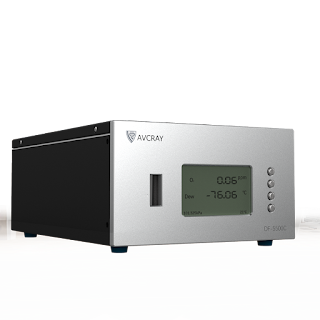Analysis of TMA-210-P Application
TMA-210-P is a portable micro-water analyzer introduced
by the CMC. It uses the principle of electrolyzed water molecules to generate
hydrogen and oxygen through a phosphorus pentoxide sensor. This sensor consists
of a glass cylinder and two parallel electrodes. The specific application is to
select the electrode material (usually made of platinum or rhodium metal wire),
and a thin layer of phosphoric acid H3PO4 film is applied between the two
electrodes. The electrolytic current that appears between the two electrodes
makes the acid. The water is decomposed into H2 and O2. The final product of
this process is phosphorus pentoxide, and P2O5 is a highly hygroscopic
substance, so it absorbs water from the sample gas. Through a continuous
electrolysis process, the water content of the sample gas and the electrolysis
Establish a balance between the moisture content, the electrolysis current is
proportional to the moisture content in the sample gas, the signal is processed
by the instrument's internal signal amplifier, and then displayed and read out.
This principle is suitable for the analysis of Xe, Ar, Kr, He, D2, F2, N2, H2,
O2, O3, HBr, PH3, SF6, Freon, C2H2, CO2, CH4, Natural gas, especially suitable
for high-purity acid gases such as Cl2, Measurement of trace moisture in gases
such as HCl, SO2, H2S (except for a few gases that will react with phosphoric
acid).
The problem of TMA-210-P application analysis is that the
sample gas must be processed by the sampling system before entering the sensor
during the measurement. Because the process gas is under abnormal working
conditions. Impurities or moisture and lye may enter the flowmeter or sensor.
We do it every time. First deflate briefly through the three-way valve. Prevent
entry of impurities. If it has entered, it needs to be purged with high purity
gas or cleaned by liquid.


评论
发表评论